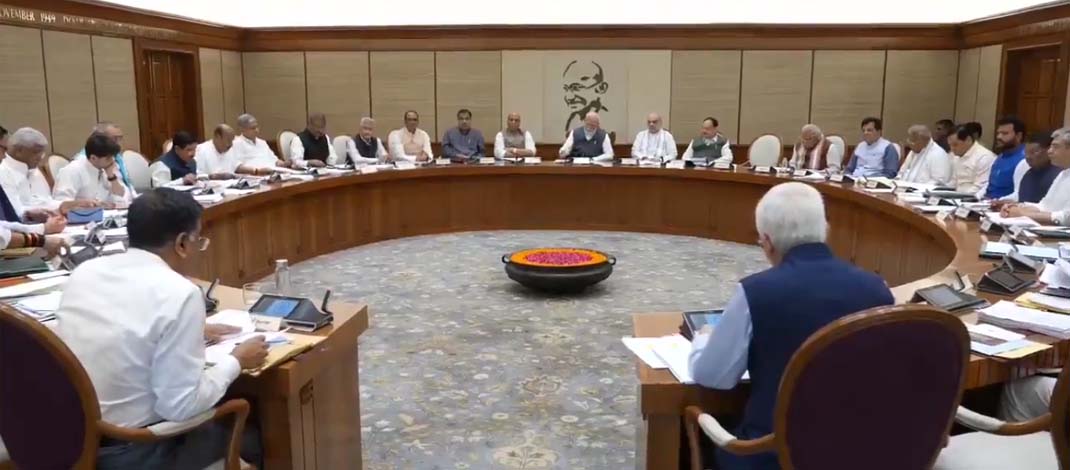- Courses
- GS Full Course 1 Year
- GS Full Course 2 Year
- GS Full Course 3 Year
- GS Full Course Till Selection
- Online Program
- GS Recorded Course
- NCERT (Recorded 500+ Hours)
- Polity Recorded Course
- Geography Recorded Course
- Economy Recorded Course
- AMAC Recorded Course
- Modern India, Post Independence & World History
- Environment Recoded Course
- Governance Recoded Course
- Science & Tech. Recoded Course
- International Relations and Internal Security Recorded Course
- Disaster Management Module Course
- Ethics Recoded Course
- Essay Recoded Course
- Current Affairs Recoded Course
- CSAT
- 5 LAYERED ARJUNA Mentorship
- Public Administration Optional
- ABOUT US
- OUR TOPPERS
- TEST SERIES
- FREE STUDY MATERIAL
- VIDEOS
- CONTACT US
GST on cigarettes, tobacco, aerated beverages may be hiked to 35%
GST on cigarettes, tobacco, aerated beverages may be hiked to 35%
- The Group of Ministers (GoM) on GST Rate Rationalisation met on December 2, 2024, and proposed significant changes to the Goods and Services Tax (GST) structure.
- GOM stands for Group of Ministers, which is a committee formed by the Government of India to address various issue
- These changes primarily affect sin goods like cigarettes, tobacco products, and aerated beverages, as well as apparel.
Next Steps:
- The GoM report will be reviewed and discussed in detail by the GST Council during its meeting on December 21, 2024.
- The GST Council, chaired by the Union Finance Minister, will have the final say on the proposed tax changes.
- There may be further discussions on periodic rationalisation of GST rates in future meetings of the Council.
Key Proposals by the GoM
- GST Rate on Sin Goods:
The GoM has proposed a new 35% GST rate on certain sin goods like:- Cigarettes
- Tobacco products
- Aerated beverages
- Currently, these goods are taxed at a 28% GST under the four-tier GST system.
- The introduction of a 35% rate aims to curb the consumption of these goods, which are often associated with negative health and environmental impacts.
- Additionally, these goods attract a cess on top of the GST, making them more expensive and discouraging consumption.
- Cess is a form of tax and an additional levy by the Central Government to raise funds for a specific purpose
- GST Structure on Apparel: The GoM also proposed changes to the GST rate on readymade garments based on their price:
- Garments costing up to ₹1,500: GST reduced to 5% (from the current 12%).
- Garments costing between ₹1,500 and ₹10,000: GST would be 18%.
- Garments costing above ₹10,000: GST would be 28%.
- This proposal aims to simplify the tax structure and make clothing more affordable for the middle-income group, while ensuring that luxury apparel is taxed at a higher rate.
- Overall GST Rate Rationalisation: The GoM report proposes tax adjustments on a total of 148 items.
- The expected net revenue impact of these changes is positive, meaning the government expects an increase in tax collections due to the adjustments.
- These items cover a variety of sectors, including goods such as packaged water, bicycles, and exercise notebooks.
The 4-Tier GST Structure:
Currently, the GST system in India is organized into four tax slabs:
- 5%: For essential goods.
- 12%: For items of medium importance.
- 18%: For standard goods.
- 28%: For luxury and demerit goods (e.g., high-end cars, tobacco, aerated beverages).
In addition to these, there are cesses applied on demerit goods like cigarettes and aerated drinks, further increasing their tax burden.
Other Proposals Discussed in Previous GoM Meetings
- Packaged Drinking Water: The GoM has proposed reducing the GST on packaged drinking water (20 liters or more) from 18% to 5%.
- Bicycles: The proposal to reduce the GST on bicycles costing less than ₹10,000 from 12% to 5%.
- Exercise Notebooks: A proposal to reduce GST on exercise notebooks from 12% to 5%.
- Luxury Shoes: GST on shoes costing above ₹15,000 would be increased from 18% to 28%.
- Luxury Watches: The GoM suggested increasing the GST on wristwatches costing above ₹25,000 from 18% to 28%.
Implications of the Proposed Changes
- The proposed 35% GST on cigarettes, tobacco products, and aerated beverages could discourage consumption of these products, especially cigarettes and tobacco, which are harmful to health.
- It could lead to increased revenue collection for the government but may also raise concerns about the price elasticity of demand for these goods. A higher tax could drive some consumers to the black market for cheaper products.
- The proposal to simplify tax rates on apparel based on price range will likely reduce the tax burden on middle- and lower-income consumers.
- The differentiation between lower-priced garments (5% GST) and luxury garments (28% GST) will make the tax structure more progressive, benefiting the less wealthy while taxing the affluent more.
- The overall restructuring and tax changes are expected to boost government revenue.
- The GST rate adjustments on 148 items will contribute to a more balanced tax system while focusing on fairness and revenue generation.
What is GST?
Key Features of GST:
Key Articles Amended/Inserted1. Article 246A: Special Provision for GSTThis new article grants both the Parliament and the respective State/Union Legislatures the power to make laws concerning GST.
2. Article 269A: Levy and Collection of GST for Inter-State SuppliesThis article defines the mechanism for the levy and collection of GST on inter-state supplies, i.e., transactions between two or more states.
3. Article 279A: GST CouncilThis article authorizes the President of India to constitute the GST Council, which plays a crucial role in the development, implementation, and regulation of GST laws.
4. Article 286: Restrictions on Tax Imposition
5. Article 366: Addition of Important DefinitionsThis article defines key terms within the GST framework:
Compensation to States Under GSTOne of the major concerns with the introduction of GST was the potential revenue loss for States, especially in the initial years of implementation. To address this:
Under the GST framework, the following adjustments were made:
Benefits of GST:
|



